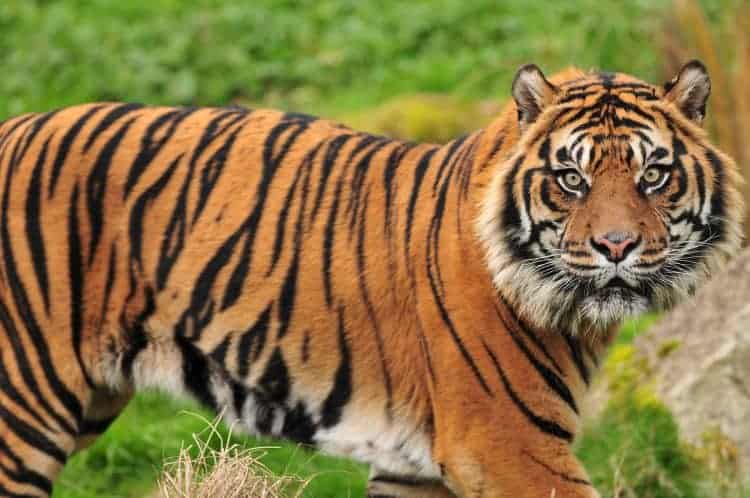More than half of the 147 tigers confiscated from a Thai temple have died, park officials have said, blaming genetic problems linked to inbreeding at the once money-spinning tourist attraction.
For years, the Wat Pha Luang Ta Bua temple in the western province of Kanchanaburi attracted hordes of tourists who could be photographed – for a fee – next to scores of tigers.

But in 2016 park officials began a lengthy operation to remove the big cats amid allegations of mismanagement and claims the creatures were being exploited.
Dozens of dead cubs were found in freezers, sparking claims the carcasses were being sold by a temple rumoured to have raked in hundreds of thousands of pounds a year from visitors.
Tiger parts can fetch enormous sums in China and Vietnam, where some people falsely believe them to have medicinal properties.
The surviving adults were taken to two breeding stations in nearby Ratchaburi province but only 61 of the 147 have survived so far, parks officials said.
“It could be linked to inbreeding,” said Pattarapol Maneeon of the department of national parks, wildlife and plant conservation. “They had genetic problems which posed risks to body and immune systems.”
Many suffered from tongue paralysis, breathing problems and lack of appetite that led to fatal seizures.
“Most of the tigers were already in a distressed state stemming from the transportation and change of location … later their health problems emerged,” said Sunthorn Chaiwattana, another department official.
Legal cases against the temple are continuing.
Conservationists questioned whether authorities had looked after the seized animals appropriately, with small, cramped cages enabling the spread of disease.
“To be very honest, who would be ready to take in so many tigers at once?” said Edwin Wiek, the founder of the Wildlife Friends Foundation Thailand.
Conditions at the enclosures were “not good enough to house so many tigers and the setup was wrong”, he added.
Tens of millions visit Thailand every year, and a lucrative wildlife tourism industry has grown in step with visitor numbers. But critics say cash often trumps animal welfare at many attractions.
For a price, visitors can ride and bathe with elephants, hold monkeys and pose for selfies with tigers. Animal rights groups have long criticised the industry, with chained-up animals kept in small quarters with inadequate veterinary care, or forced to perform tricks for tourists.
This article was first published by The Guardian on 16 September 2019.
What you can do
Support ‘Fighting for Wildlife’ by donating as little as $1 – It only takes a minute. Thank you.
Fighting for Wildlife supports approved wildlife conservation organizations, which spend at least 80 percent of the money they raise on actual fieldwork, rather than administration and fundraising. When making a donation you can designate for which type of initiative it should be used – wildlife, oceans, forests or climate.











Đăng nhận xét